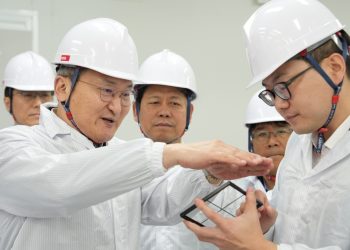Samsung Display has secured a contract with Microsoft to develop and supply OLED on silicon (OLEDoS) panels for Microsoft’s upcoming mixed reality (MR) device, According to industry sources. The deal reportedly involves the production of hundreds of thousands of units with the partnership between the two tech giants.
Microsoft is developing a new MR device intended primarily for gaming and multimedia content rather than Metaverse applications. The device, incorporating Samsung’s OLEDoS technology, is anticipated to be released as early as 2026.
The commercial launch of Microsoft’s new mixed reality (MR) headset is anticipated to take place following the finalization of specifications for the OLED on silicon (OLEDoS) panels to be supplied by Samsung Display. The company has given the timeline for the meticulous development process for the device, designed primarily for gaming and multimedia consumption.
Samsung Display has dedicated a specialized team, known as the “M Project,” to advancing its OLEDoS technology. The “M” refers to microdisplays, which are compact screens intended for use in mixed-reality devices. Executive Vice President Jaebeom Choi, who also heads the Micro Display Team at Samsung Display, leads the M Project.
In addition to its internal efforts, Samsung Display is collaborating with Samsung System LSI, the company’s logic business unit, to develop OLEDoS. Samsung System LSI is responsible for designing the silicon boards used in these microdisplays, while Samsung Foundry, another division of Samsung, manufactures the wafers on which the OLEDoS panels are built.
These wafers are processed at Samsung Display’s A1 facility in Cheonan, where organic materials are deposited on the silicon and undergo encapsulation. This collaboration between Samsung’s various units aims to deal with the complexity and innovation required to produce the advanced display technology that will power Microsoft’s next-generation MR device.
Samsung Display is also preparing to handle the in-house color filter and microlens array (MLA) processes, which are contingent on increased demand for its OLED panels. This step would further streamline its production capabilities and enhance control over the final product quality.
Despite its efforts, Samsung Display faces competition within its own conglomerate. Samsung’s MX Business, responsible for smartphones, initially tested OLEDoS samples from Samsung Display for its mixed reality (MR) device but eventually opted for Sony as its supplier. This decision has heightened the stakes for Samsung Display’s partnership with Microsoft, as a successful collaboration could potentially help regain Samsung MX Business as a client.
The broader competition in the mixed reality space further amplifies the pressure on Samsung Display to succeed. Both Samsung and Google have confirmed plans to announce their “XR platform” later this year, a collaboration involving Samsung-built hardware and an Android XR operating system developed by Google. Meanwhile, competitors like Meta are also gearing up to challenge Apple’s Vision Pro, with new devices expected to launch in the coming years.
Also Read:
- Hyundai Invests $28 Million in Thai EV Assembly and Battery Production
- LG Unveils Korea’s First Open-Source AI Model: EXAONE 3.0 and ChatEXAONE Beta
- Vietnam and South Korea Deepen Ties in Digital Transformation and AI
- South Korea Loses Appeal in $100M Arbitration Case Over Samsung Merger
- South Korea Revokes Stage X’s Mobile License Over Financing Failures







